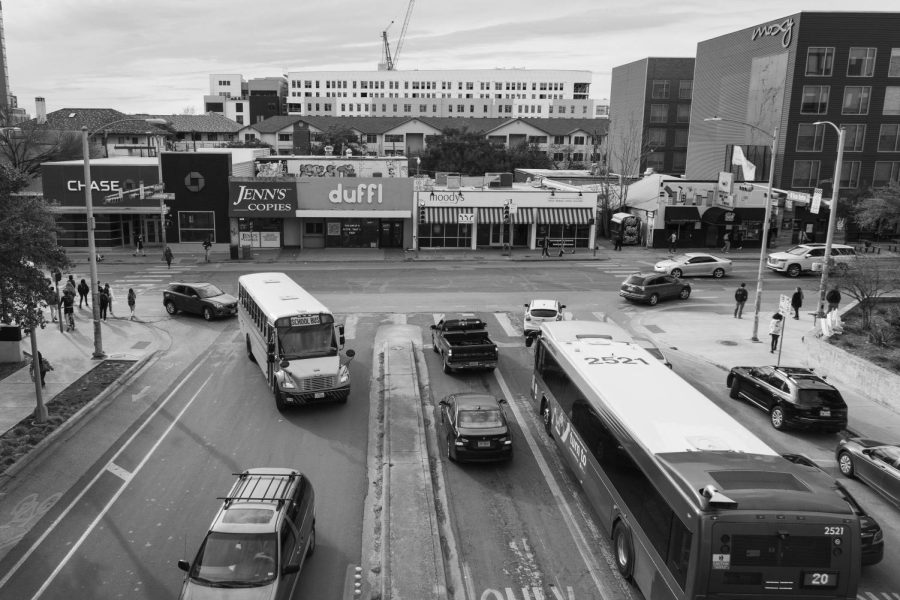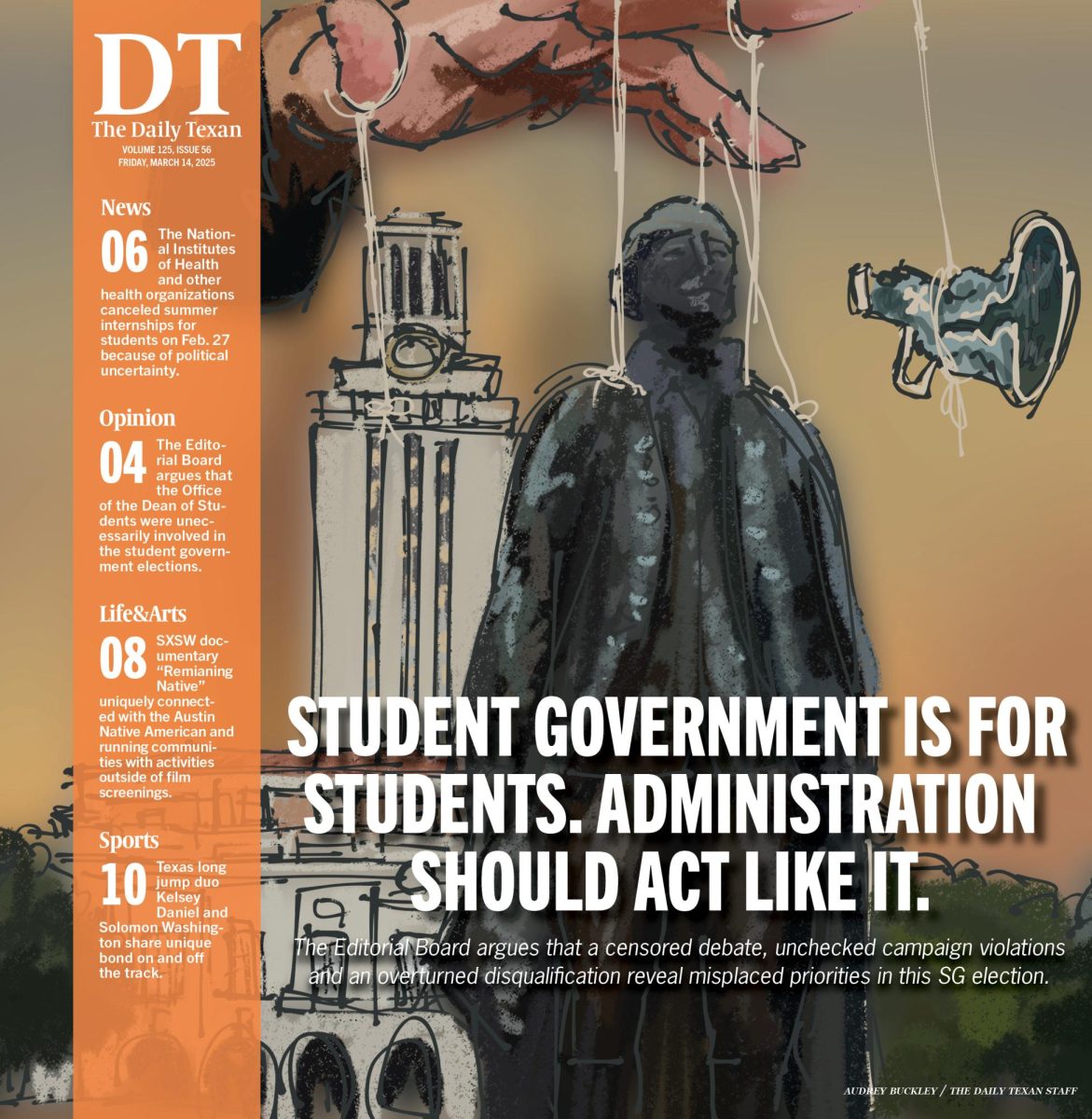City of Austin grant aims to make safer, more walkable intersections in West Campus
February 17, 2023
The city of Austin received a $22.9 million grant on Feb. 3 to improve road infrastructure within the next five years throughout the city, including two prospective Guadalupe Street intersections at Martin Luther King Boulevard and Dean Keeton Street.
“This grant will accelerate Austin’s ability to deliver life-saving infrastructure improvements to our community,” Austin mayor Kirk Watson said in an email statement. “It is through a team effort that we will end the tragic and preventable fatalities and injuries on our roadway system.”
Because of their need for upgrades, the two West Campus intersections were selected during the planning stages of the Safe Roads for All Program for systematic treatment. Lewis Leff, an Austin transportation safety officer, said systematic treatment is an umbrella term for areas that need safety improvements like sidewalk gaps, walking ramps and reflective traffic signal backplates so traffic signs are easier seen at night.
“We’re excited to start the process of really developing projects and going out and talking about more specific (locations),” Leff said. “We’re going to continue to grow and expand the work that we’ve done and have more of those community conversations and get more specific detail and feedback as the projects are developed over time.”
According to the city of Austin’s Vision Zero Initiative, which aims to end traffic fatalities, 118 people died last year on Austin roadways and 532 were injured. Pedestrians and bicyclists made up nearly one-fourth of those injuries. Urban studies professor Greg Anderson said it’s critical that these safety improvements are made sooner rather than later because so many of those citizens at risk reside in West Campus.
“Our land development code doesn’t help as far as allowing the types of development that help foster real walkability,” Anderson said. “Our land development code is very auto-centric, and when you try to build to (the needs of) the car, you do so at the detriment of pedestrians, of cyclists and of the environment.”
Though the exact solutions being implemented in West Campus are unknown at this time since the project is still in development, Anderson suggested the area could become more walkable by narrowing streets, implementing two-way streets and reducing speed limits. He said road diets, a redistribution of land between roads and sidewalks, would increase pedestrian and bicyclist safety by widening designated walking areas.
“If we really want to move people safely through intersections, (they) need to be dramatically redesigned,” Anderson said. “We have to put pedestrians on a podium, and we have to allow for pedestrians to navigate that space safely.”
With apartments being rapidly built in West Campus and thousands of students living closer to campus, Anderson said it’s important to address these traffic concerns before the area becomes too crowded to properly fix the issues.
“We didn’t have anywhere near as many people living in West Campus in the past as we do now,” Anderson said. “Now really is the time to recognize the amazing opportunity we have to better serve all the students and young adults living in West Campus by thinking ahead over the next five to 10 years of what needs to be done and getting those plans in motion.”












